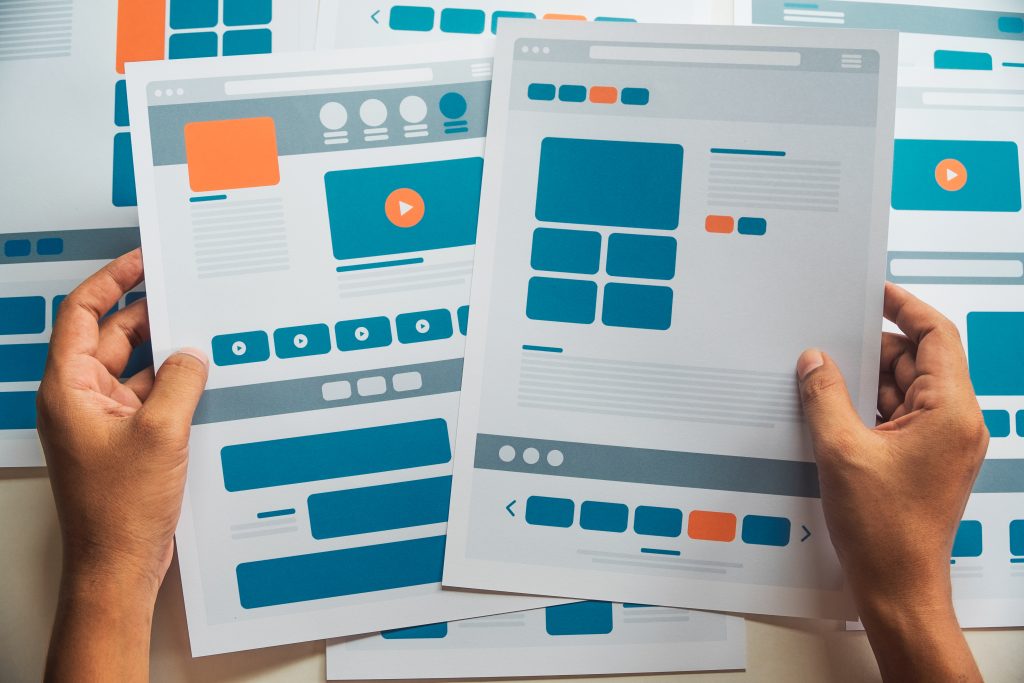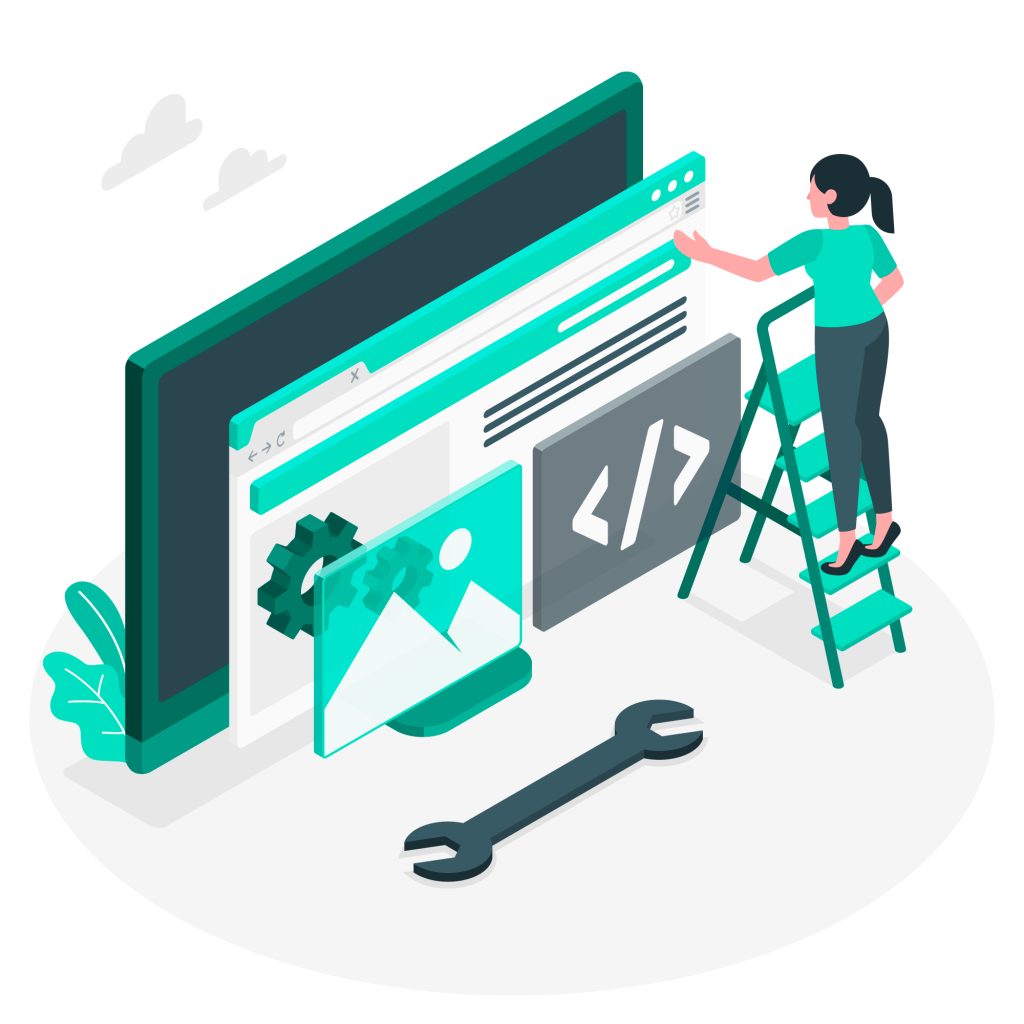
If your website takes more than a few seconds to load, most people will leave before it even appears. Sites that load in one second can convert up to three times more visitors than slower ones. Investing in quality website design and development saves you money in the long term.
Is your website quietly costing you customers?
For many small businesses, the issue is not just having a website; it is having one that is slow, clunky, outdated, and untrustworthy.
This guide will show you:
-
The most common website mistakes small businesses make
-
How to avoid them with practical, non-technical fixes
-
How to choose the right platform and build approach
-
A simple checklist for speed, security, and conversions
What Type of Website Do You Have?

Most small business websites in Australia run on one of these platforms. Choosing the right one is less about avoiding “bad” platforms and more about picking the right fit and ensuring it is built and maintained professionally.
| Platform | Best for | Strengths when built professionally | Things to consider |
|---|---|---|---|
| WordPress | Service businesses, blogs, and flexible eCommerce | Highly customisable, SEO-friendly, works for almost any site, endless design flexibility | Needs quality hosting, well-managed plugins, and regular updates for peak performance |
| Shopify | eCommerce stores | Secure, fast checkout, excellent product and inventory tools, seamless integrations | Works best with a tailored theme, optimised product pages, and a professional SEO setup |
| Squarespace | Simple service sites, creatives | Easy-to-use editor, beautiful templates | Less control over advanced performance and SEO settings |
| Wix | Starter sites on a budget | Simple editor, quick setup | Can be less scalable and slower if overloaded with features |
Tip:
WordPress and Shopify are both industry-leading platforms. The most common issues come from poor initial setup or neglect over time, not from the platforms themselves.
Common Website Design Mistakes That Cost You Customers
1. Cluttered layouts
Too much on the screen at once creates confusion. Give each page one clear action and remove elements that do not help visitors decide or act.
2. Poor mobile responsiveness
With mobile traffic making up the majority of visits in most industries, your site must adapt to every screen. Tiny buttons, overlapping text, and sideways scrolling drive people away.
3. Slow loading speeds
Visitors leave if your site takes too long to appear. Every extra second of load time can cost you conversions. Optimising images, trimming unnecessary code, and using quality hosting make a huge difference. (We use a trusted Australian host, Synergy Wholesale, for which we’re a reseller.)
4. Confusing navigation
Menus should be clear, simple, and built around what your customers want to do, not your internal department structure or what you think customers need.
5. Outdated design elements
It’s a fine line on when to use design elements. Things like image carousels, tiny or unreadable fonts, and large, outdated stock photos can make your site look old-fashioned and untrustworthy, particularly if your website is not modernised or using the latest technology.
The Truth About DIY Website Builders
DIY platforms like Wix, Squarespace, and entry-level template setups in Shopify or WordPress can be fine for quick launches, but they come with limitations if you want consistent growth:
-
Limited customisation
Templates only go so far without expert help. -
Hidden technical debt
Over time, add-ons or plugins can slow your site down and cause glitches, particularly if you’re not keeping these up to date. -
Security blind spots
Even on secure platforms, poor password management or unverified apps can create risks. -
Performance constraints
DIY builds often skip advanced optimisation steps that keep sites fast on mobile.
If your website is a key lead generator or sales tool, professional design and development will pay for itself in speed, security, and conversions.
The Real Costs of Cheap Website Solutions
Cheap isn’t always best! Whilst cheaper websites may seem ideal to start with, it’s worth understanding the hidden costs that come with these, as well as the potential risks that you may encounter.
-
Maintenance fees
Low-cost hosting or apps often come with upsells and hidden charges. For example, some hosting companies charge additional fees to manage your DNS (the ability to point your emails to a third-party subscription, such as Google Workspace or Office 365) or to have SSL (to secure your website, a requirement from Google and other search engines). -
Plugin conflicts
Poorly managed add-ons can break forms, shopping carts, or core functions. They can also have a detrimental effect if not updated with security. -
Downtime
Low-end servers may crash during high traffic, meaning lost leads and sales. -
Poor support
Without expert support, you may face delays or be forced to troubleshoot yourself.
Essential Components of Professional Website Development

Frontend (what visitors see)
-
Modern coding standards (HTML5) for compatibility, speed, and SEO.
-
Flexible style rules (CSS3) so your site looks good on every screen.
-
Interactive features (JavaScript) for menus, forms, and user actions.
-
Responsive design principles so that content automatically adapts to different devices.
Backend (the engine room)
-
Reliable hosting and server setup to handle speed and security.
-
Database management to keep your site’s information organised and backed up.
-
Security protocols like SSL certificates, two-factor logins, and firewalls.
-
API integrations to connect your site with payment gateways, booking systems, AI and CRMs.
How to Choose the Right Approach: In-House vs Agency
Whether you choose to do the website yourself or get some help, there are a few things to take note of. It’s worth considering the following when making your choice:
| Factor | In-house | Agency |
|---|---|---|
| Cost | Ongoing salary plus tools | Fixed project fee |
| Speed | Slower if balancing other work | Dedicated project team |
| Maintenance | You handle updates | Care plan included |
| Expertise | Generalist skills | Access to specialists |
Security and Performance Essentials
A part of building your website is to make sure it’s secure and performing at its best. Without the proper protection or optimisation, your website can get lost in the search engine results and be invisible to your audience.
These items are a must:
-
SSL Certificates
Encrypt data to protect customer information. -
Daily/monthly backups
Protect your content in case of hacks or errors. -
Speed optimisation
Compressed images, lean code, and caching make your site faster. -
Security monitoring
Regular updates, firewall rules, and account checks prevent attacks
Tip:
Don’t waste money on building a website, without adequate security and optimisation. You’ll get lost in internet jungle!
Making Your Website Work for Your Business
You’re building your website, but it doesn’t stop there. Focus on your customer and make it a pleasant experience by giving them what they need up front and following these guidelines:
Conversion-focused design
-
One main call-to-action per page.
-
Strategic placement of buttons and forms.
-
Clear, easy-to-follow user journeys.
Content management best practices
-
Update regularly with fresh, relevant information.
-
Use keywords naturally in headings and text.
-
Track visitor behaviour in Google Analytics or similar tools.
FAQs
Q: What is “frontend” vs “backend”?
A: Frontend is the part visitors see. Backend is where the site is hosted and managed behind the scenes.
Q: What is “responsive design”?
A: It means your site works well on phones, tablets, and desktops without separate versions.
Q: Do I need a care plan for my website?
A: Yes. Websites need regular updates, backups, and security checks to stay safe and perform well.
The Right Way Forward
Investing in quality website design and development saves you money long term by avoiding downtime, lost leads, and expensive rebuilds. If you want your site to work as hard as you do, focus on speed, security, and a design that guides visitors to take action.
Next step:
Book your free Website Audit with Design Grid to find out where your site stands and how to fix the biggest issues first or contact us today to get started on your new website.

